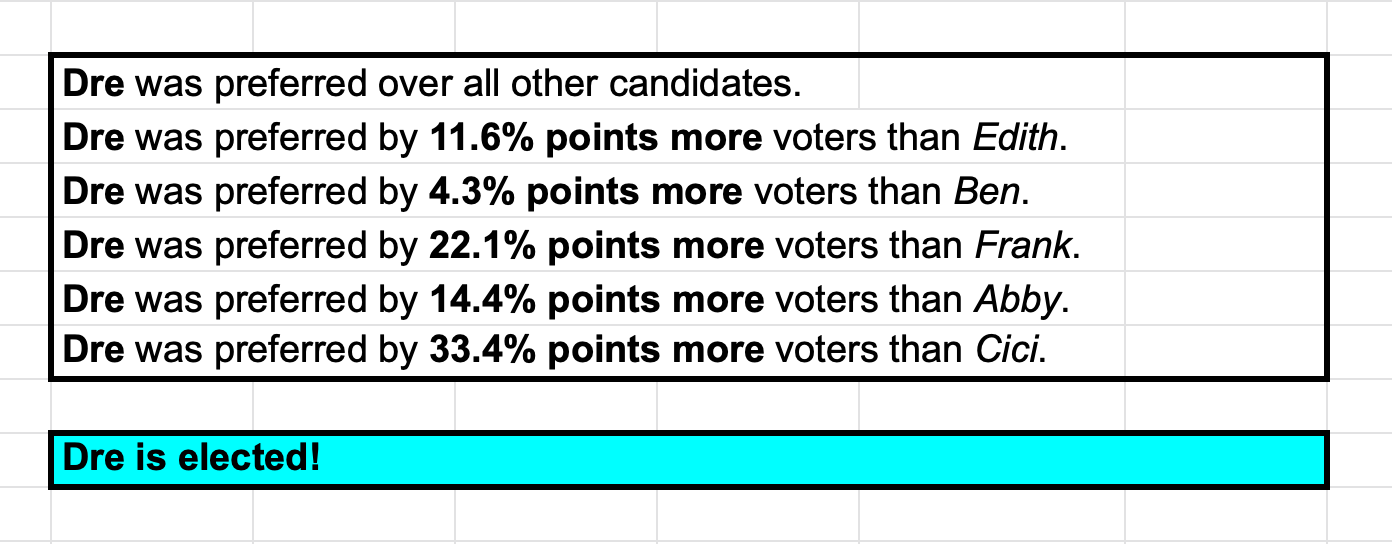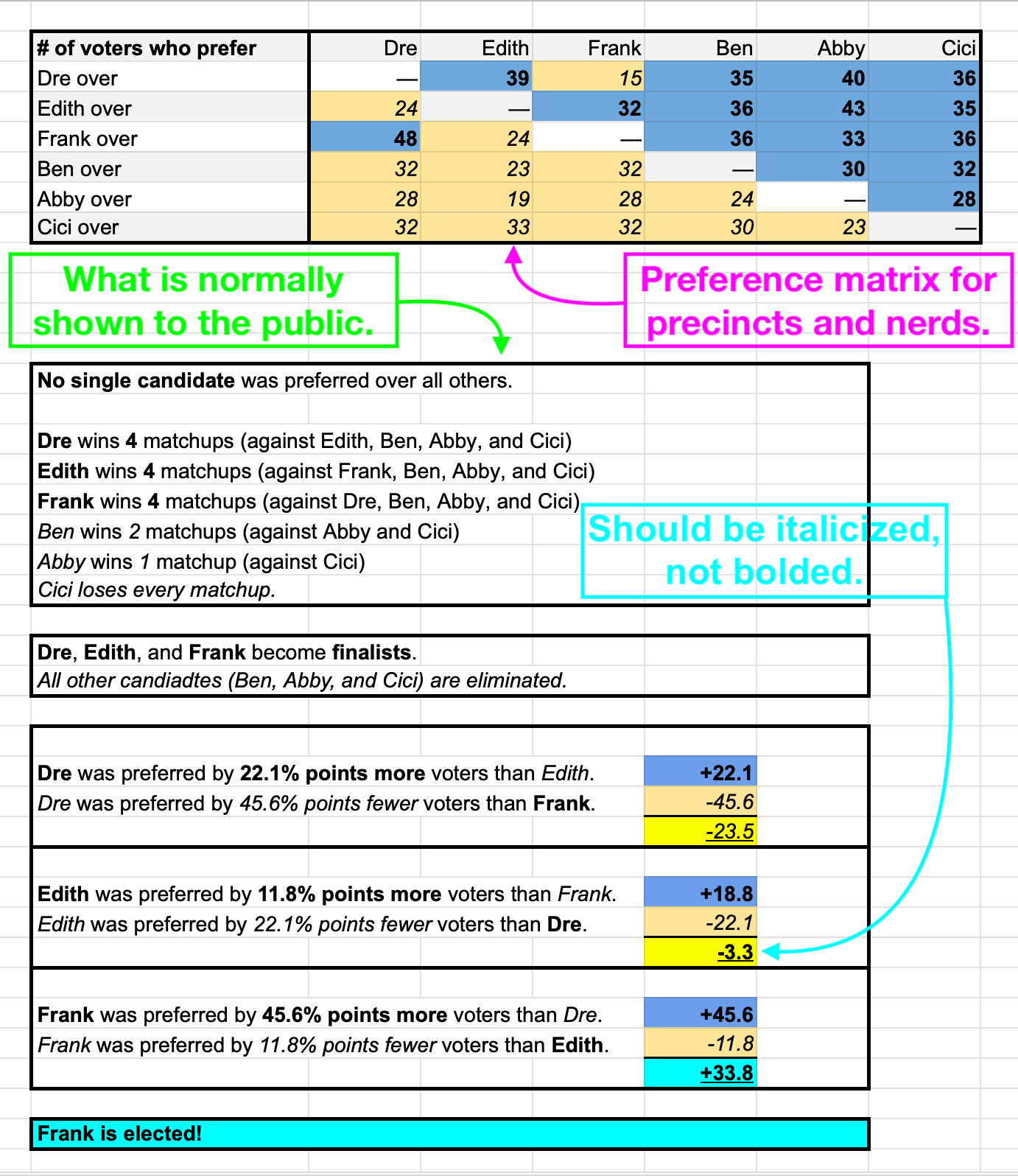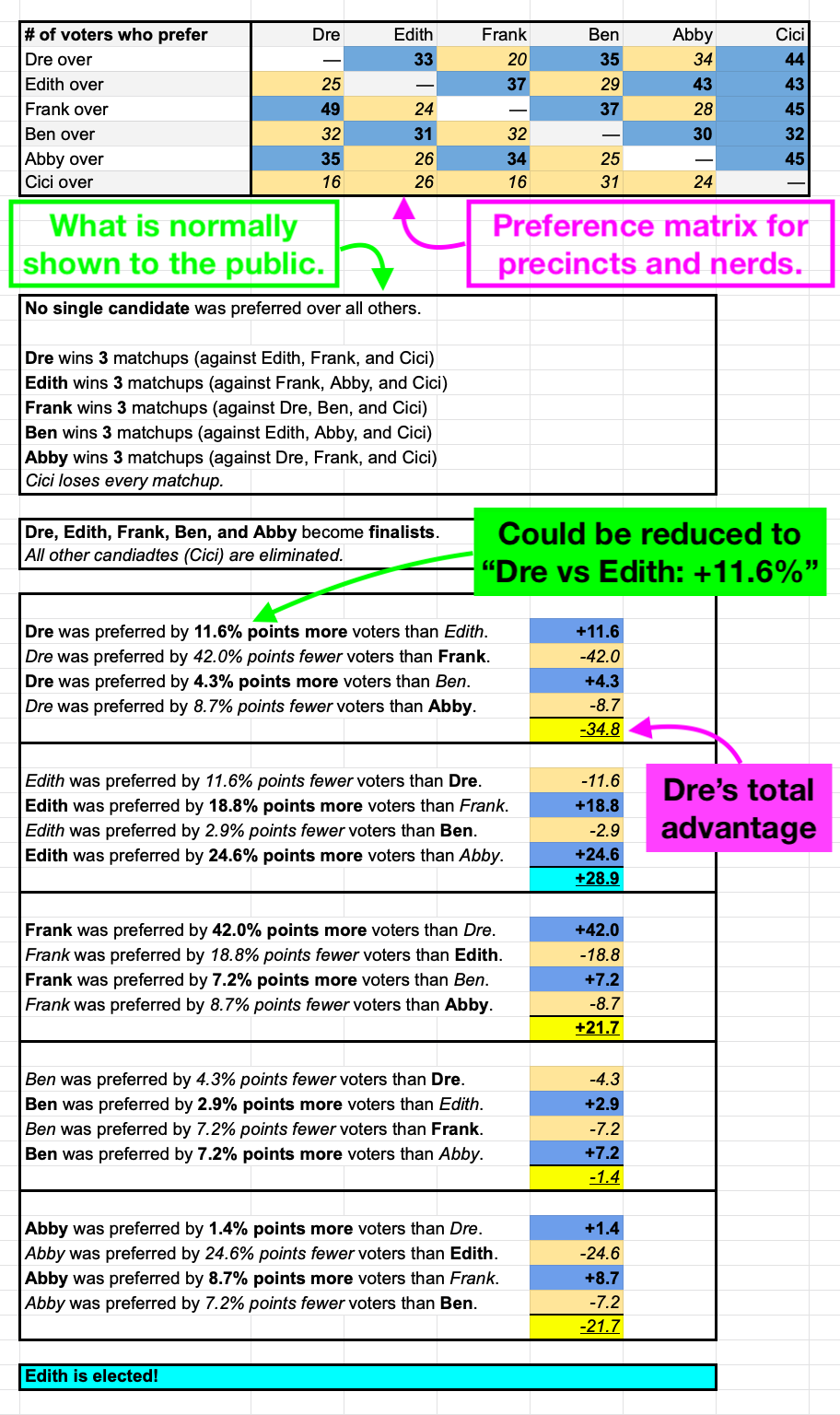@rob,
As stated in your original post, "It’s not like there is much activity." So why, then, do you keep highlighting that "[Equal Vote hasn't] even visited the forum in ages." What do you count as Equal Vote?
Until 8 months ago, @SaraWolk was the only employee, and now I'm the second. But are we the only people who count as "Equal Vote"? I'd say no. @Andy-Dienes was recently the chair of our PR Research Committee. @Keith-Edmonds is a board member. @Marcus-Ogren is leading Equal Vote research. @Jameson-Quinn is doing the same. @masiarek helps with outreach and the Software Development Committee. I could go on, but I consider all of these fine folks to be a part of Equal Vote and when they post here, that counts as Equal Vote participation.
We promote the Forum in our slack regularly. It's linked on the Equal Vote site. And have you checked out similar forums recently? There hasn't been much text-based activity anywhere lately. r/EndFPTP is mostly news articles about RCV. The three voting theory channels in the CES discord are so dead that when I promote my Open Democracy Discussions in them every week, the most recent post is often my promotion from the previous week. The Forward Party discord server had some activity when it started up, but it's died down, too. The most in-depth text-based discussions about voting theory recently have been nonsense Twitter fights with people who think improving single winner elections in the US is completely pointless. There's just a general apathy in the theory space right now. I suspect it's temporary and will ramp back up when high-profile US election campaigns pick up steam, but for now, the issue isn't a lack of participation from Equal Vote.
Obviously, we all want the forum to be better. So why not offer that? There's no need to wrap it up in some weird package about you "running" it. As Sara stated, there are processes for all of this, agreed on by a council of active volunteers.
Though I wasn't around for the founding, I'm privy to the history. I'm included in the email threads. I wouldn't have moved 2,300 miles across the country if I didn't care enough to learn it all. Moreover, I care enough that I've cultivated a space where the in-depth voting theory discussions ARE happening: my Open Democracy Discussions. They're not text-based, but they've attracted some of the folks here like @stardrop, @last19digitsofpi, @Jack-Waugh, @robla, and even yourself once or twice. I think part of why people go there is because it's a space that is explicitly non-toxic. Sara has been talking about this for years and she's right. It's why she's been elected as the Executive Director of Equal Vote multiple times. Cooler heads have prevailed and realized that Sara is what this movement needs, and activists have responded positively to that.
I'll point out that I don't think Sara should be the dictator of the Forum or whatever. I work next to her every day. I promise you that she doesn't want to be. Sara's trying to cultivate a positive culture and I implore you take that to heart.
Fueling rage against Equal Vote only makes this forum worse. If you want to make this forum better, then start by making it better.



